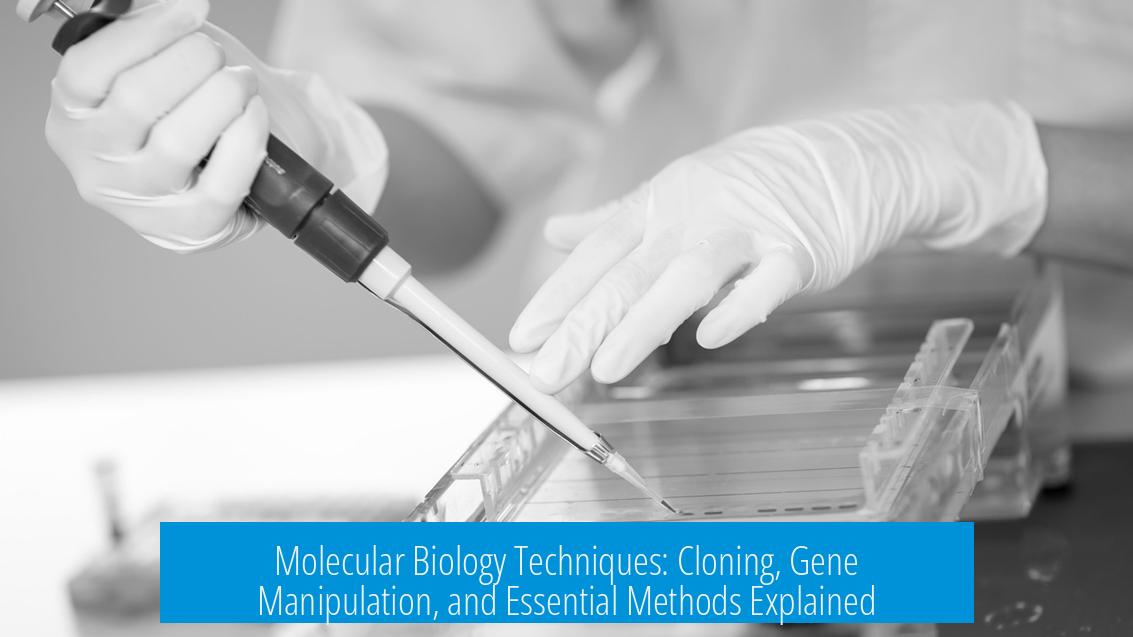Molecular Biology Techniques
Molecular biology techniques encompass various methods used to study and manipulate genetic material, including molecular cloning, gene manipulation, and interdisciplinary approaches integrating biophysics.
Molecular Cloning
Molecular cloning refers to the process of isolating and amplifying specific DNA sequences by inserting them into plasmid vectors. It enables gene study and protein expression. A foundational reference is Molecular Cloning: A Laboratory Manual by Sambrook and Green, which focuses intensively on cloning genes into plasmids.
Detailed protocols guide researchers through steps such as vector preparation, ligation, transformation, and screening of recombinant DNA. Work on comprehensive cloning guides has been ongoing for over a decade, illustrating the complexity and continual refinement of these techniques.
Gene Manipulation Principles and History
Gene manipulation techniques involve altering DNA sequences to study gene function or produce modified organisms. Principles of Gene Manipulation by Primrose provides an extensive overview. It covers early cloning concepts from the discovery of DNA’s nature to modern genetic engineering tools, including CRISPR and recombinant DNA technology.
This text links foundational knowledge with contemporary applications, helping to contextualize how genetic manipulation has evolved and is currently being applied in molecular biology.
General Molecular Biology Techniques
For a broader spectrum of molecular biology methods beyond cloning and gene manipulation, Wilson and Walker’s Principles and Techniques of Biochemistry and Molecular Biology offers comprehensive coverage. This textbook includes various biochemical assays, nucleic acid and protein analysis, and enzymology.
Additionally, integrating biophysical approaches can enhance understanding. Resources like Biophysics and Molecular Biology Tools and Techniques explore methodologies that combine physics principles with molecular biology techniques, offering alternative perspectives and advanced tools.
| Technique | Key Resource | Description |
|---|---|---|
| Molecular Cloning | Molecular Cloning: A Laboratory Manual | Protocols on inserting genes into plasmids for amplification and study. |
| Gene Manipulation | Principles of Gene Manipulation | Historical and modern methods for altering DNA sequences. |
| General Techniques | Principles and Techniques of Biochemistry and Molecular Biology | Wide range of biochemical and molecular biology approaches. |
Key Takeaways
- Molecular cloning is essential for gene isolation and amplification using plasmid vectors.
- Gene manipulation combines historical concepts with modern genetic engineering tools.
- General molecular biology techniques extend beyond cloning and include biochemistry methods.
- Interdisciplinary resources integrate biophysics with molecular biology for advanced techniques.
What are the key resources for learning molecular cloning?
“Molecular Cloning: A Laboratory Manual” by Sambrook and Green is a primary guide. It focuses on cloning genes into plasmids. This manual is essential for practical cloning methods.
How has gene manipulation evolved over time?
“Principles of Gene Manipulation” by Primrose covers the history extensively. It explains the shift from early DNA cloning techniques to modern gene editing methods.
Which book offers a broad overview of molecular biology techniques?
“Principles and Techniques of Biochemistry and Molecular Biology” by Wilson and Walker covers a wide range of methods. It goes beyond cloning to include general biochemical techniques.
Are there resources that combine biophysics with molecular biology methods?
“Biophysics and Molecular Biology Tools and Techniques” by Pathfinder addresses this interdisciplinary approach. It links physical principles with biological experimentation.
Is there a comprehensive ongoing guide specifically for cloning?
Yes, a detailed guide on cloning has been in development since 2011. It aims to provide thorough and updated cloning techniques for researchers.





Leave a Comment